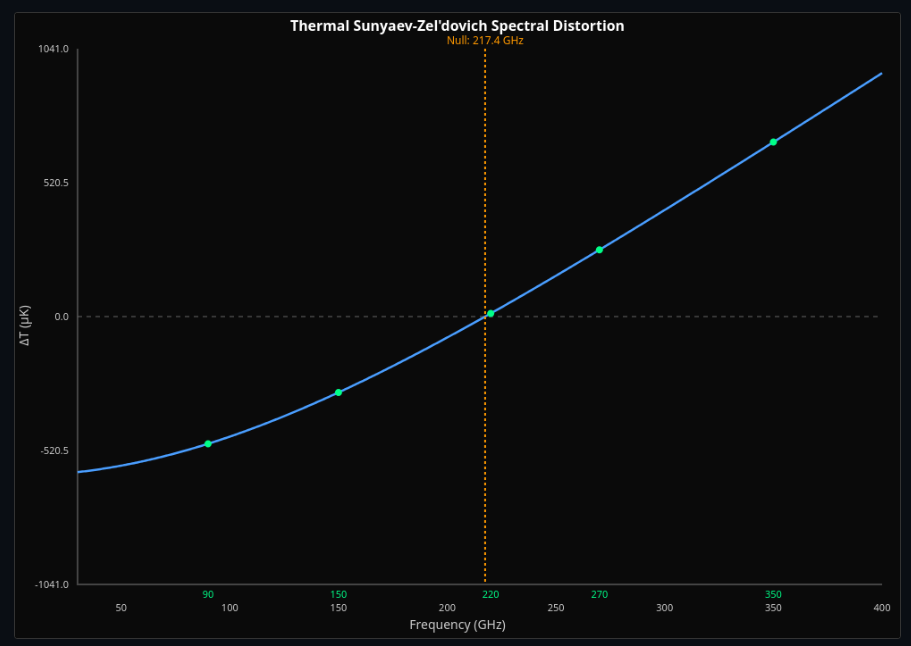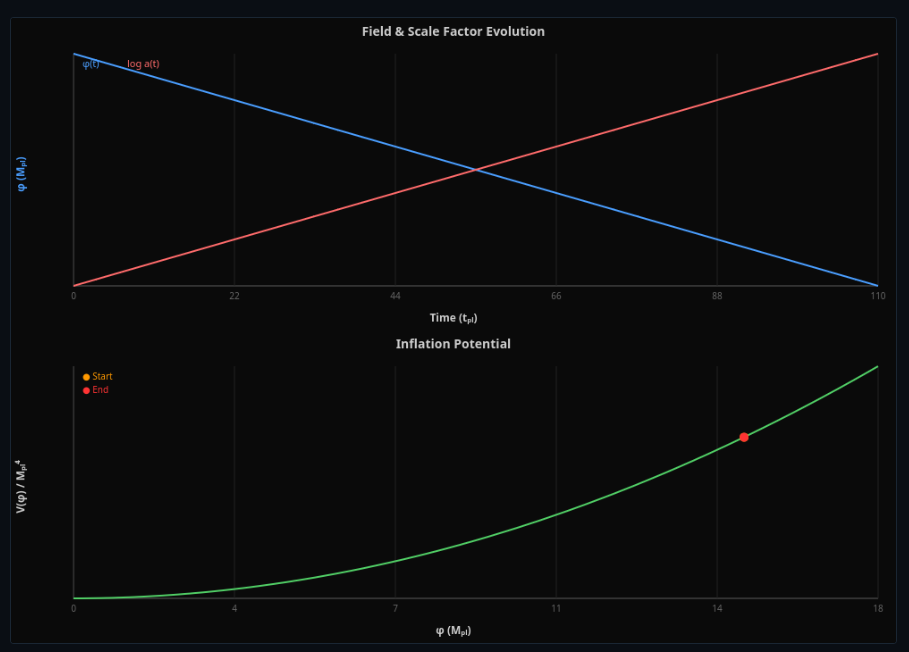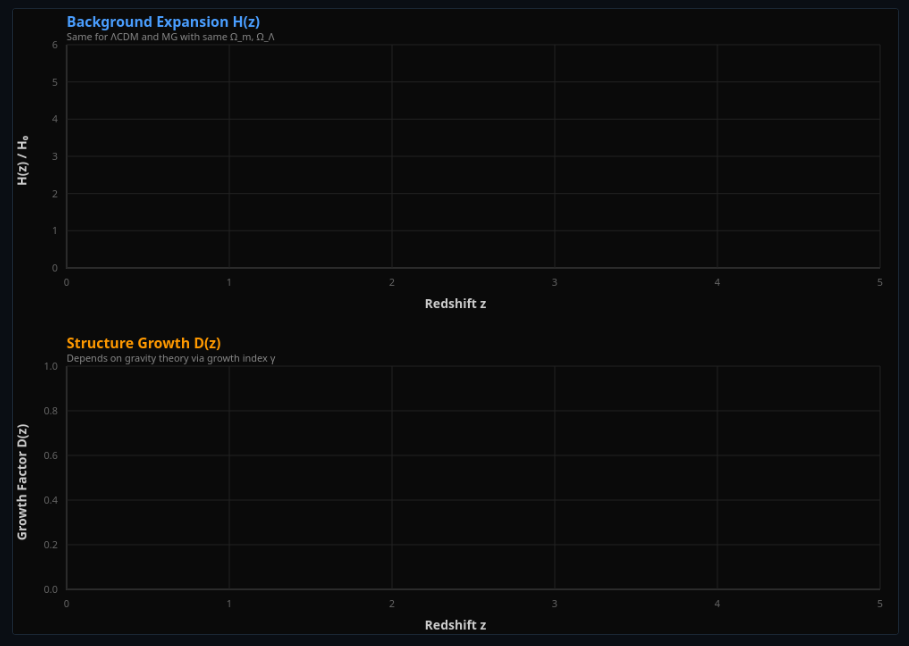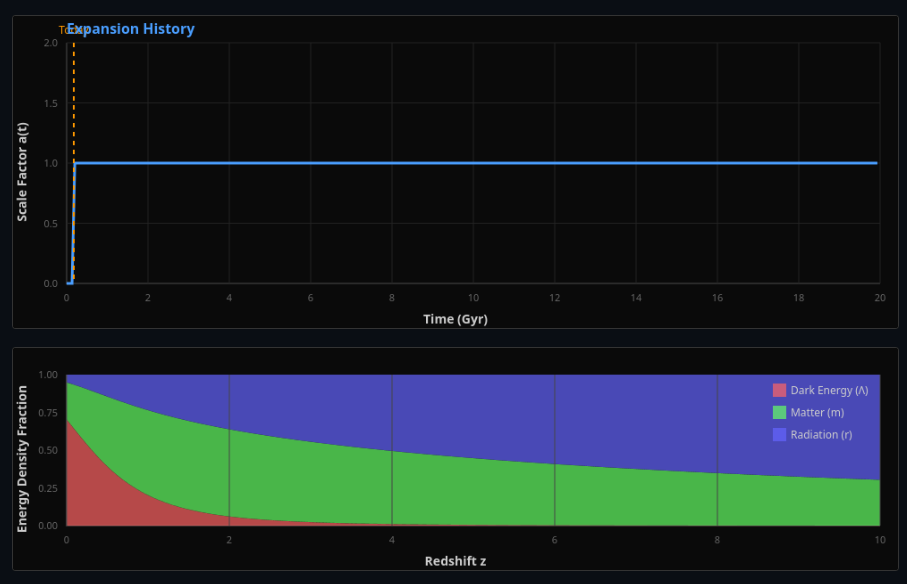Cosmology
Explore the evolution and structure of the universe from the Big Bang to today. Watch the universe expand, dark energy accelerate cosmic growth, and structure form from quantum fluctuations. These interactive simulations let you adjust cosmological parameters, measure distances across billions of light-years, and see how observations constrain our understanding of dark matter, dark energy, and the cosmic web.
Universe Expansion & Geometry
Build intuition for how the universe expands under the influence of matter, radiation, and dark energy. Explore spatial curvature and trace light rays through cosmic history.
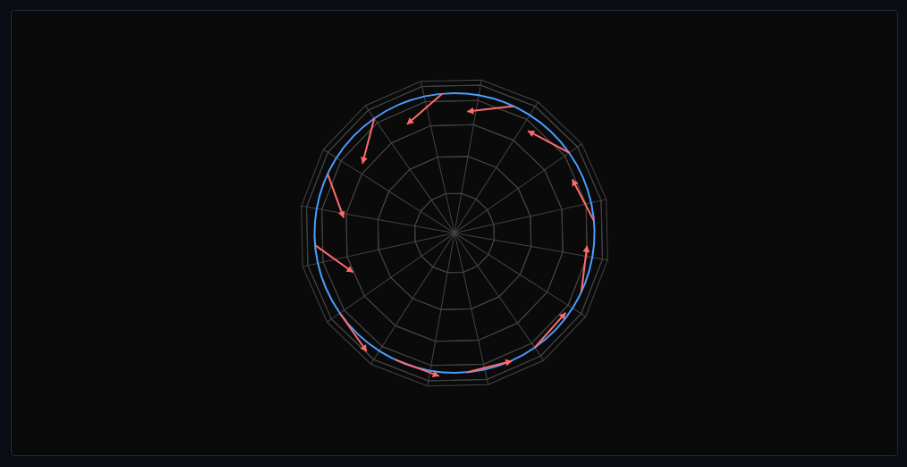
ΛCDM Universe Expansion
Adjust dark energy and matter densities to see how the universe expands—watch radiation, matter, and Λ dominate at different epochs

Spatial Curvature Explorer
Compare triangle angles and circumferences in positive, negative, and flat geometries—explore the spatial curvature of the universe
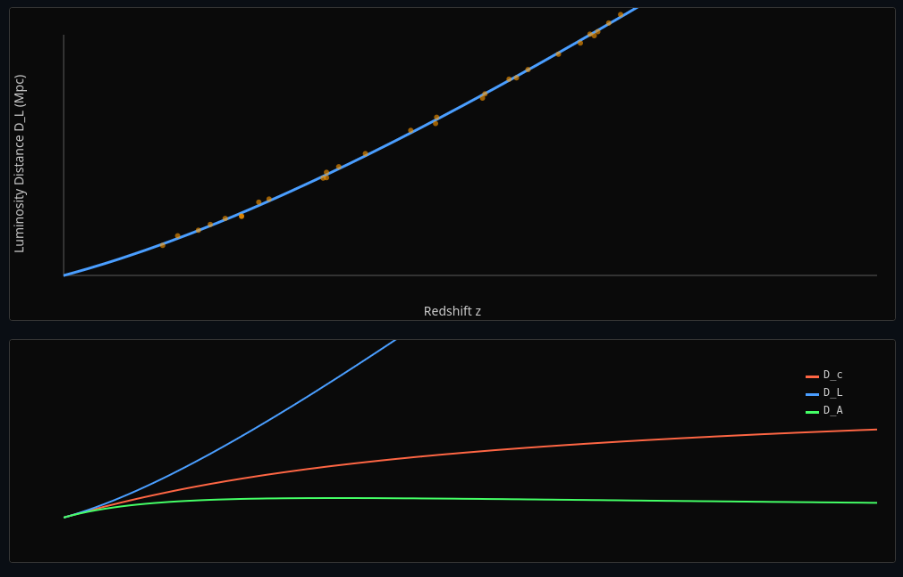
Cosmological Light Cone & Horizons
Trace light rays in conformal coordinates—see particle horizons and the observable universe expand
Cosmic Distance Ladder
Measure distances across the cosmos using standard candles, standard rulers, and gravitational wave sirens. Fit cosmological parameters from observations and constrain the Hubble constant.
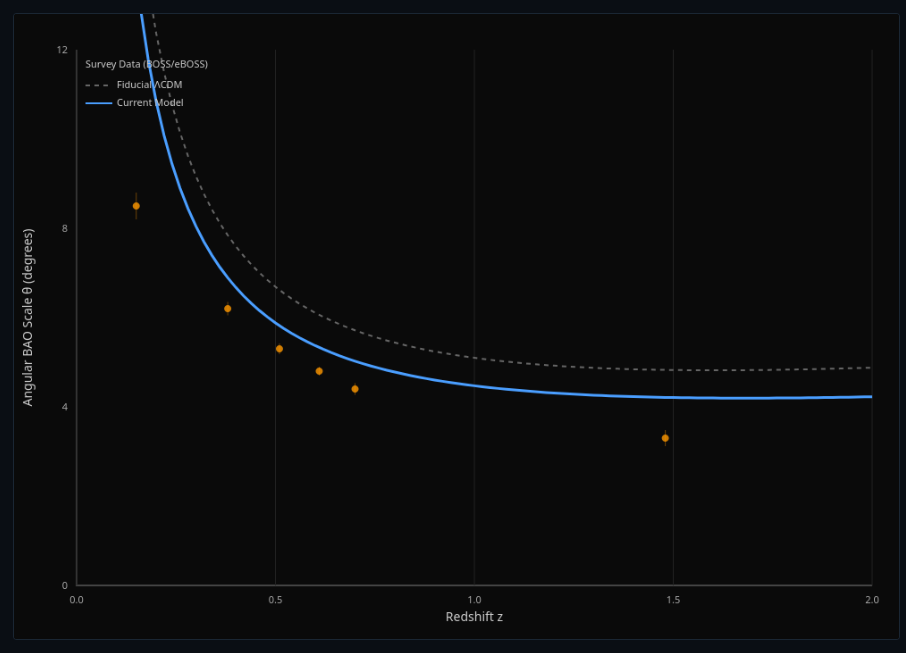
Cosmic Distance Ladder
Plot supernovae on a Hubble diagram—fit cosmological parameters from luminosity distance vs redshift
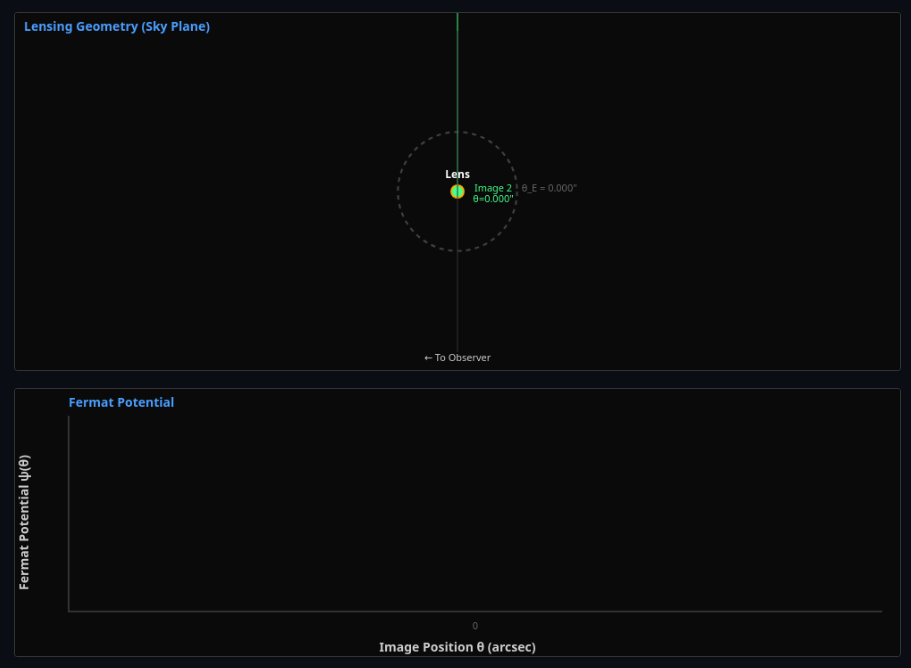
Baryon Acoustic Oscillations as Standard Ruler
Use the cosmic sound horizon as a standard ruler—measure angular diameter distance from BAO peak positions
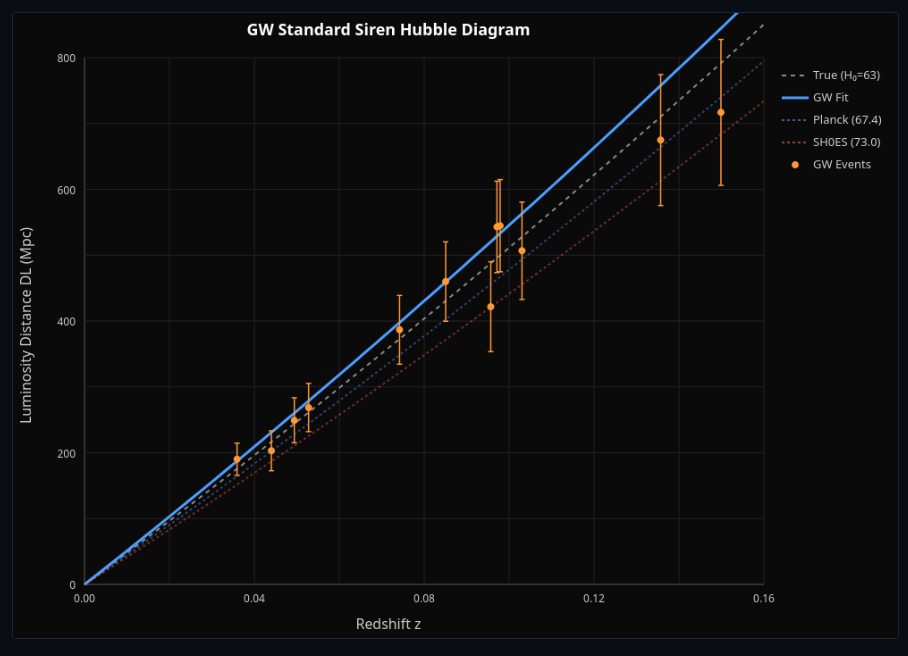
Strong Lens Time Delays
Fermat potential and H₀ measurement
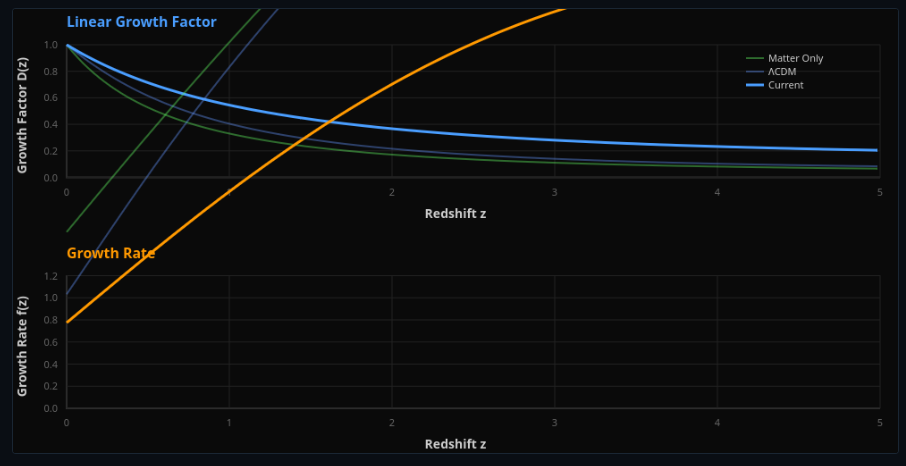
Standard Sirens
Gravitational wave distance measurement
Large-Scale Structure Formation
Watch density perturbations grow under gravity and dark energy. Explore the matter power spectrum, dark matter halo abundance, and gravitational lensing from cosmic structure.
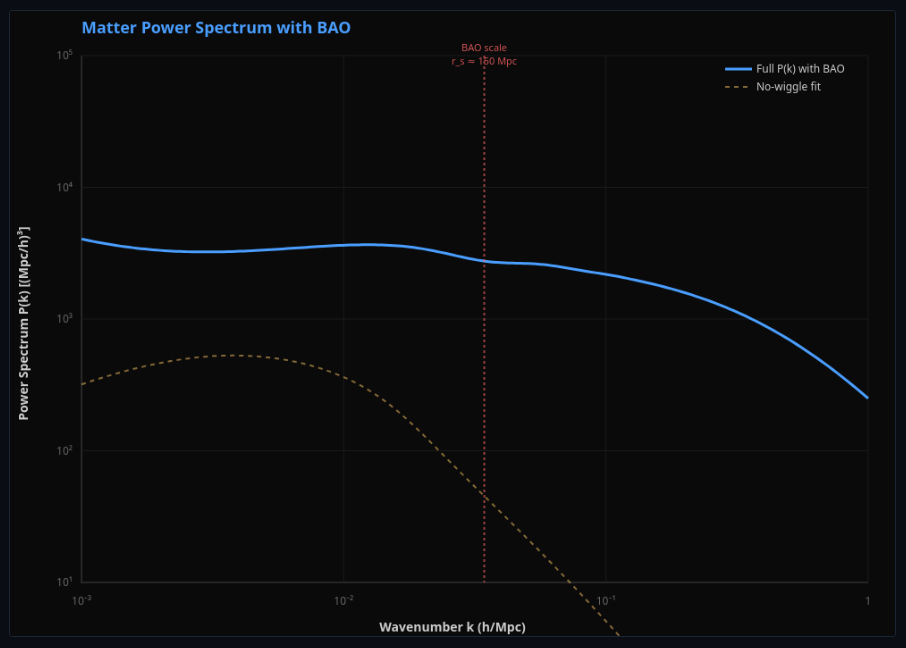
Structure Growth in ΛCDM
Watch density perturbations grow under gravity—see how dark energy slows structure formation
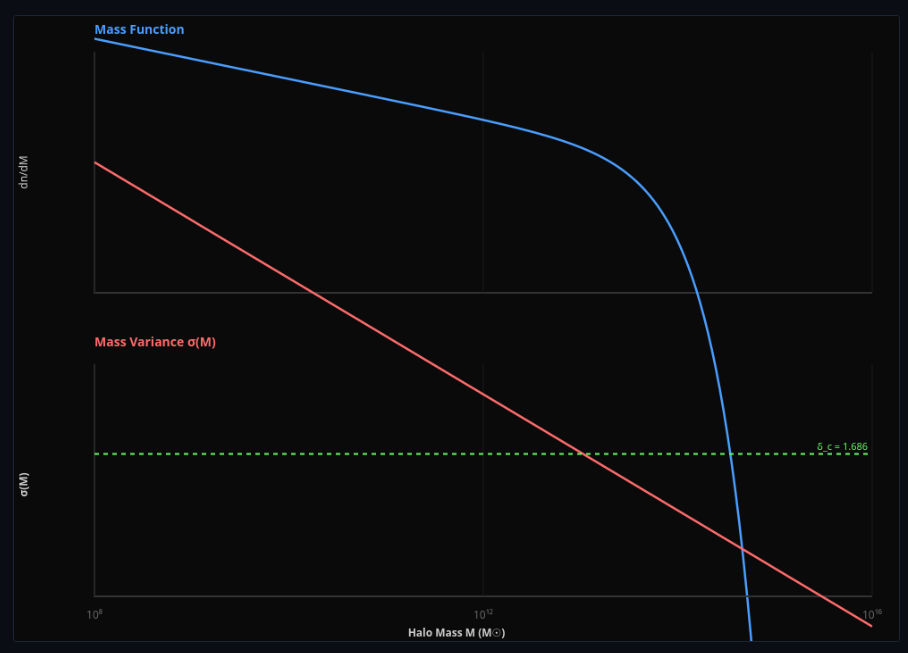
Matter Power Spectrum & BAO
Explore the matter power spectrum with BAO wiggles—adjust baryon fraction to see acoustic oscillations

Dark Matter Halo Mass Function
Plot dark matter halo abundance vs mass—compare Press-Schechter and Sheth-Tormen predictions

Weak Gravitational Lensing
Compute shear power spectra from matter clustering—constrain dark matter and dark energy from cosmic distortions
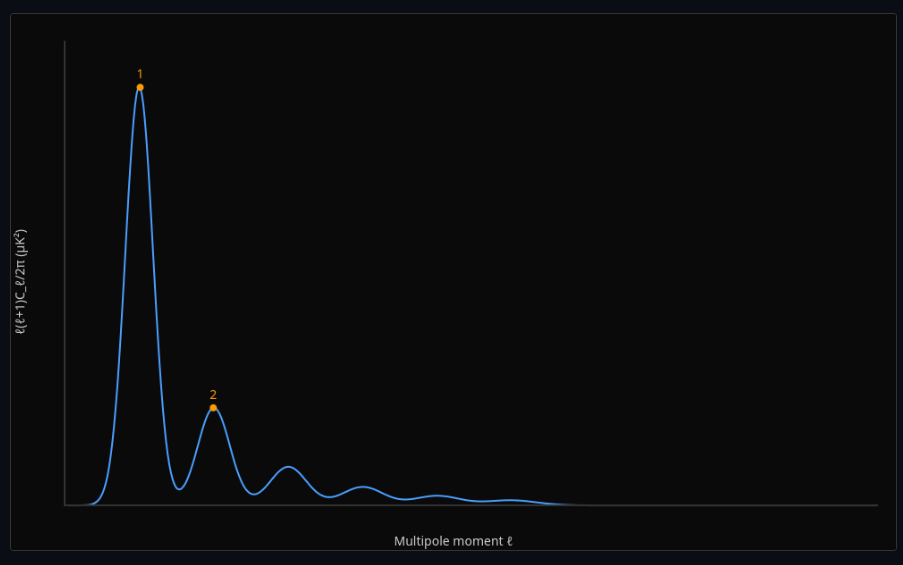
N-Body Sheet
Cosmic web emergence simulation
The Cosmic Microwave Background
Explore the acoustic peaks in the CMB power spectrum and see how cosmological parameters shift peak heights and positions. Discover secondary distortions from hot gas clusters.
The Early Universe
Trace the first moments of cosmic history. Watch inflation generate primordial fluctuations, Big Bang nucleosynthesis forge light elements, and recombination release the cosmic microwave background.
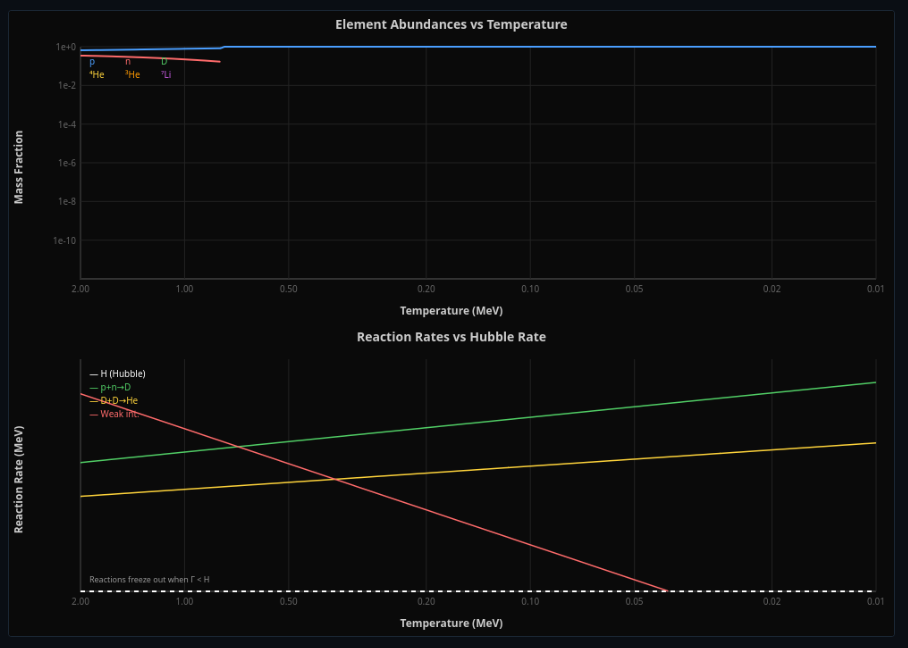
Slow-Roll Inflation Dynamics
Evolve a scalar field during inflation—compute slow-roll parameters and primordial power spectra
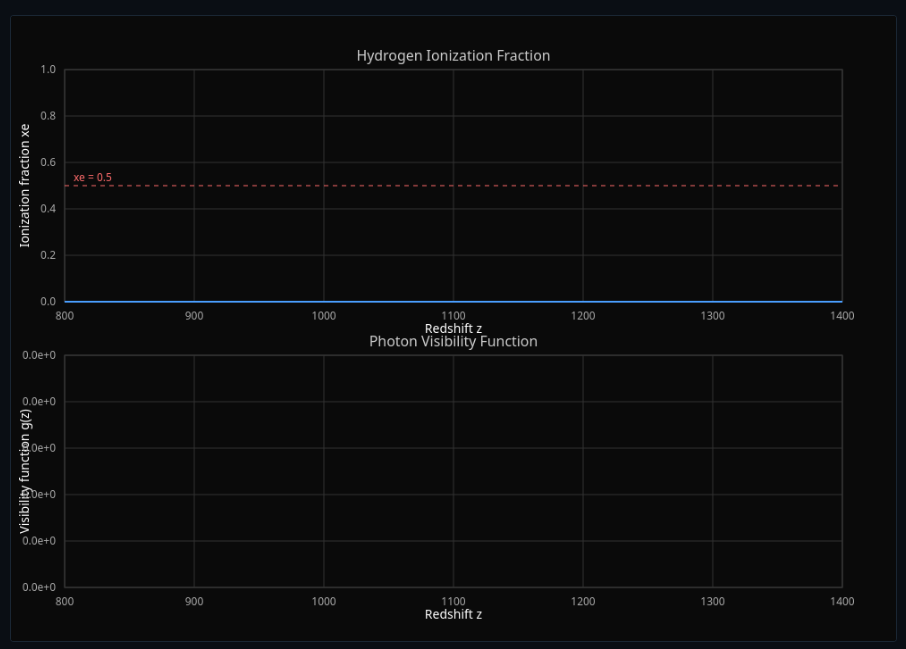
Primordial Nucleosynthesis
Watch the first three minutes of the universe—adjust baryon density to see how light element abundances change
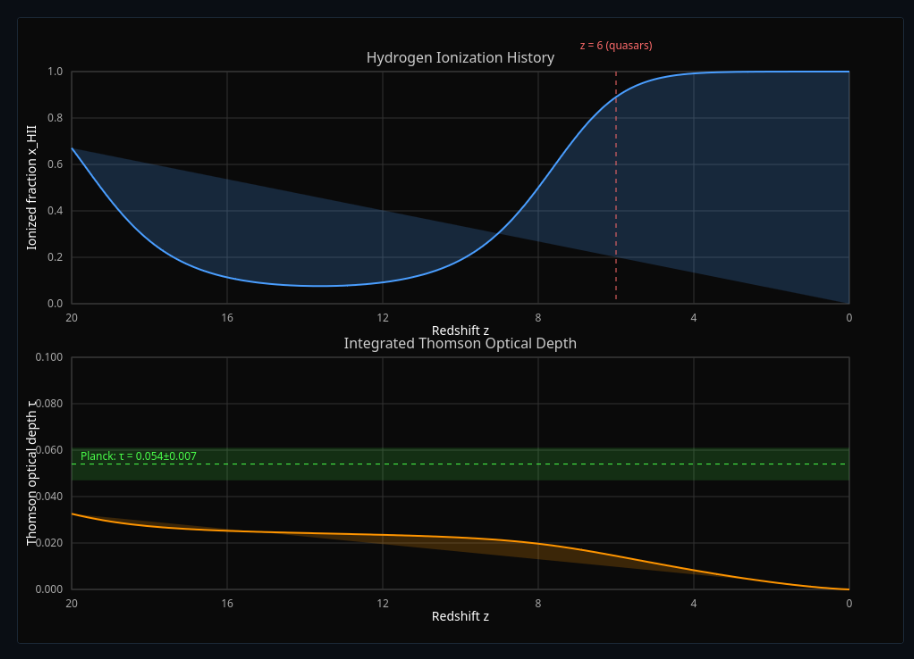
Cosmic Recombination & Last Scattering
Follow ionization fraction as the universe cools—see when photons last scatter to form the CMB
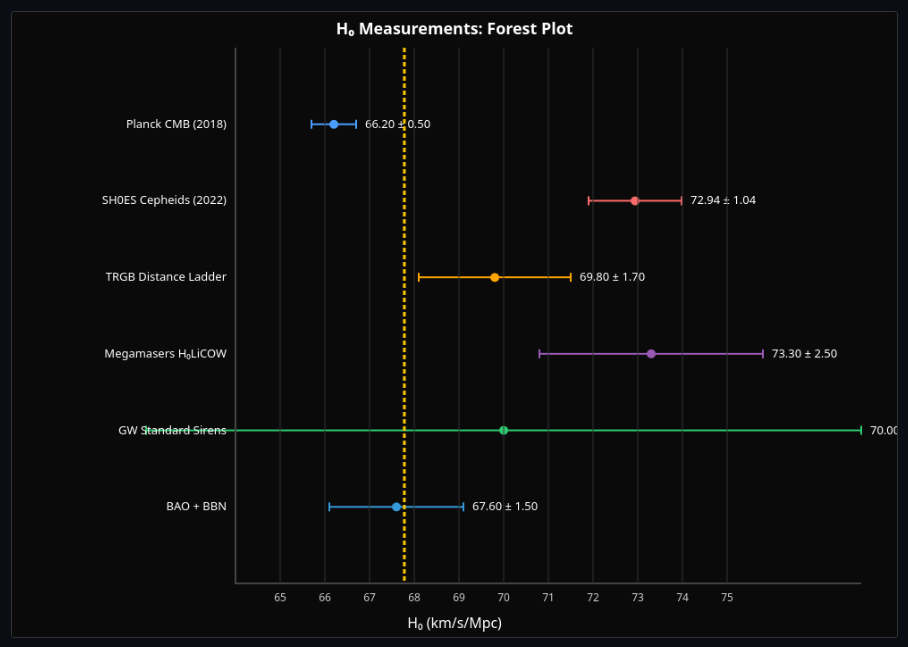
Reionization History
HII fraction evolution
Modern Cosmology: Tensions & Tests
Investigate the Hubble tension and distinguish dark energy from modified gravity. Explore the degeneracies between background expansion and structure growth.
